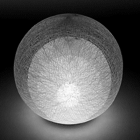 "Imbued of art's regenerative mission," the artists of Rio de Janeiro's Grupo Frente united in 1953 under the banner of what critic Mário Pedrosa hailed at the time as a new "freedom of creation" for art understood as a "vital, independent activity."(1) A founding member of the Frente ("the Front"), alongside artists including Ivan Serpa and Hélio Oiticica, Lygia Pape emerged at the forefront of the Brazilian avant-garde of the 1950s. Rejecting representation and naturalism, the Frente artists gravitated toward the principles of concrete art and geometric abstraction first introduced to Brazil at the São Paulo Bienal of 1951. Influenced by Mondrian's Neo-Plasticism and the aesthetic principles of the Bauhaus, brought to Brazil in the person of Max Bill, Pape and others found a powerful point of departure in the constructive rigor, formal sequencing, and serial geometries of concretism.
"Imbued of art's regenerative mission," the artists of Rio de Janeiro's Grupo Frente united in 1953 under the banner of what critic Mário Pedrosa hailed at the time as a new "freedom of creation" for art understood as a "vital, independent activity."(1) A founding member of the Frente ("the Front"), alongside artists including Ivan Serpa and Hélio Oiticica, Lygia Pape emerged at the forefront of the Brazilian avant-garde of the 1950s. Rejecting representation and naturalism, the Frente artists gravitated toward the principles of concrete art and geometric abstraction first introduced to Brazil at the São Paulo Bienal of 1951. Influenced by Mondrian's Neo-Plasticism and the aesthetic principles of the Bauhaus, brought to Brazil in the person of Max Bill, Pape and others found a powerful point of departure in the constructive rigor, formal sequencing, and serial geometries of concretism.The Frente artists would eventually diverge from the more severe formalism of São Paulo's Grupo Ruptura, whose 1952 manifesto first set out the values of concrete art in Brazil, evolving the objective language of abstraction gradually toward the participatory experience of form. The creative freedoms explored by the Frente group anticipate the emergence in 1959 of Neo-Concretism, a movement embraced by Pape, Lygia Clark and Oiticica for its privileging of subjectivity and phenomenological experience. Perhaps best known for her Neo-Concrete works, Pape experimented freely with medium and process during those years, producing the marvelous Book of Creation, which through the viewer's interaction reveals the story of the world's creation through form and color, and the Neo-Concrete Ballets, which inventively combined performance, sculpture and film.
Pape showed in Frente group exhibitions in 1954 and 1956, and her work from this early period already suggests the directions in which she would move by the end of the decade. Pape's wooden reliefs take their cue from concretist precepts, witnessed in the formal sequencing of the set of black squares in the present work, for instance, and in the clear distinction between those squares and the orange background. Here, the rhythmic order of the identical black squares simultaneously echoes the shape of the orange square and suggests a departure from the constraints of that form. The centripetal energy of the diagonal between the squared-off clusters of black squares is set in dynamic tension with the opposing diagonal, which in turn suggests the perceptual integration of the artwork into its surrounding space. The internal tension between the forms and their background, from which Pape started, cedes to the new tension between the object-hood of the work and the space in which it exists. "These reliefs are incorporated in the wall (real space) as if they were part of it," Fernando Cocchiarale explains. "Their optical and tactical integration is created through a chromatic artifice." In the present example, the orange square contrasts with the white of the gallery wall in the same sense that the smaller black squares stand out against the orange background, resulting in what Cocchiarale describes as a "perceptive feeling of continuity, which makes the reliefs look like a geometric protuberance on the walls of the exhibition space."(2)
Pape's interest in integrating the artwork more organically with the external world would reverberate throughout her career, as she variously explored the formal, expressive and social dimensions of art. Her works from the Frente years, such as the present relief, positively suggest the beginnings of her aesthetic project in the constructive ideas of geometry and their projection into the space of the world.
Abby McEwen.
1) M. Pedrosa, quoted in F. Gullar, "Frente Group and the Neo-Concrete Reaction," in Constructive Art in Brazil: Adolpho Leirner Collection, São Paulo: DBA, 1998, 146, 148.
2) F. Cocchiarale, Lygia Pape: Entre o olho e o espírito, Porto: Mimesis, 2004, 63-4.























